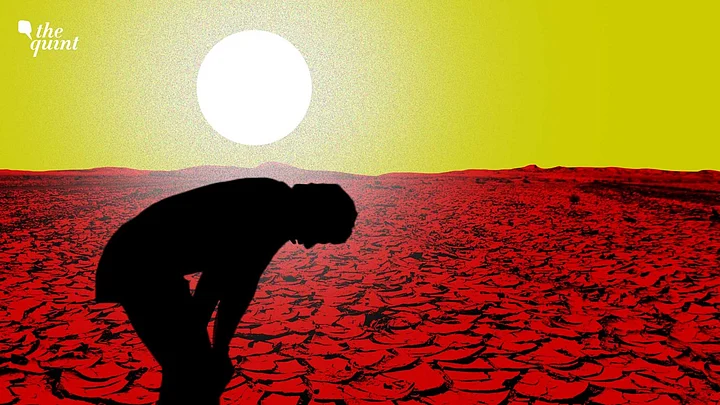Did you know that the rise in heat and humidity are putting millions of Indians at risk of dying from heat stroke, overheating, seizures, and other heat-related complications?
Did you also know that many parts of South Asia, including India will be unlivably hot by the year 2090?
India recorded the hottest month of March in over 120 years, in 2022. Temperatures crossed the 45 °C mark in March and touched 49 °C in April 2022.
As the heat rises, many parts of India, especially the coastal states, run the risk of reaching wet bulb temperatures so high that the human body simply won't be able to keep up and will die of overheating.
What is wet bulb temperature? Which parts of India are at risk? And can we do anything about it?
What Is Wet Bulb Temperature?
Wet bulb temperature is a combination of two factors - heat and humidity, to give you the combined outside temperature, called wet bulb temperature.
The human body can't tolerate wet bulb temperatures that cross 35 °C. It simply can't compensate for the heat outside by sweating any further, because the presence of high humidity prevents sweat from evaporating efficiently.
Multiple parts of India like Rajasthan, Maharashtra, Tamil Nadu and Andhra Pradesh recorded temperatures crossing 45 °C in March and April 2022. This heat coupled with humidity in the 40-65 percent bracket creates extremely high wet bulb temperatures.
What Happens If The Wet Bulb Temperature Gets Too High?
We've extensively covered the impact of heat and cold on the human body. But in short, the human body's internal temperature is 36.8 °C, give or take 0.5 °C. When the outside temperature falls or rises our bodies compensate by either sweating to cool off or warming ourselves up by burning fat and/or eating food.
But here are the two important points about sweating and heat:
When we sweat, the body cools off, but only if the sweat evaporates from our skin.
Our bodies can only cool themselves up to a certain extent. Air conditioning and cool water can help ease this.
Beyond this point our bodies will overheat and we experience fatigue, dehydration, confusion, cramps, and eventually heat stroke and death.
Now the sweat on our skin can only evaporate if atmospheric moisture and water content is low enough to allow this to happen. This is where relative humidity comes into the equation. Sweat can't evaporate well if you're in a humid place with high atmospheric moisture content.
Which is another reason you feel extremely uncomfortable in very hot and humid climates. It's because your body is unable to cool itself off efficiently. If the temperature climbs high enough for long enough you'll die of heat stroke.
The equation for calculating wet bulb temperature is VERY complex, so here's a calculator to simplify it.
India's Heat Crisis is Not Looking Good
As we mentioned earlier, wet bulb temperatures that exceed 35°C can be life-threatening. An article in Science Journal states that "the first instances of 35°C wet bulb temperature" would appear around halfway through the 21st century.
32°C is the normal wet bulb temperature threshold that most humans can continue working and functioning in without major issues. 35°C is the highest safe wet bulb temperature, and even that safety doesn't last for long.
But many parts of India already report wet bulb tempertatures exceeding 32°C, especially coastal states.
The Economist tracked weather data from six big cities across the country to arrive at some troubling conclusions.
Wet-bulb temperatures crossed 32°C in four of the cities in the last five years. On 1 May 2022 the wet bulb temperature in Chennai touched 32.6°C, the highest in a decade. The temperature of 38°C combined with 68% relative humidity created this temperature.
Kolkata and Ahmedabad both reported uncomfortably high wet bulb temperatures of 31°C in 2020, as well.
While Delhi became even hotter, crossing the 40°C mark, it recorded a lower wet-bulb temperature of around 24°C because of relative humidity staying at just under 24 percent.
However, Delhi isn't immune either, recording wet bulb temperatures of 32°C in 2018.
Multiple weather stations including Lucknow, across other parts of India also reported the all-time highest temperatures they've ever recorded in the months of March and April 2022.
Now, with the wet bulb temperature calculator mentioned above, the average outside temperature needs to reach 55°C to create a wet bulb temperature of above 32°C.
However, with India's high humidity, many parts of the country have already reported wet bulb temperatures crossing this dangerous threshold.
This, coupled with the wealth gap making air conditioners a luxury that most of India cannot afford, will mean the deaths of millions of Indians from heat-related problems.
What Can We Do About It?
Well, the only solution is putting an end to climate change. But, according to studies, even if we limit climate change now the earth will get hotter by 1°C by the end of the 21st century.
Unless India finds an affordable way to provide air conditioning, hydration and "cool off" zones for its population of more than 1.7 billion, this population will soon fall, because of heat-related fatalities.
So, in short, the only solution would be to put an end to climate change.
(With inputs from The Economist)

